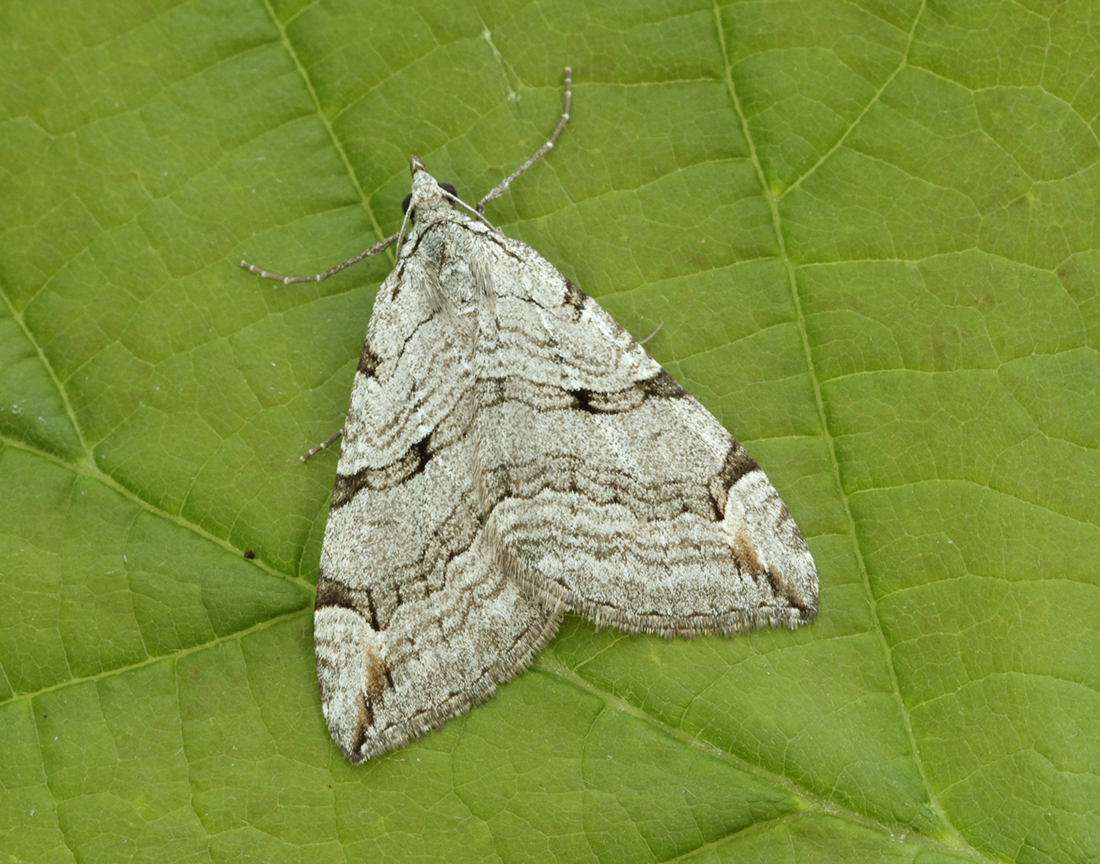Identification
The sub-basal fascia has a gentle curve and is not so acutely angled as in the Lesser Treble-bar. Abdomen shape is the key diagnostic feature though, it is very pointed in the male and this will need to be viewed from underneath, as will the female abdomen which is extremely pinched in, then bulbous, and then straight-sided at the tip.
In ssp. scotica the ground colour is bluish grey.
Recording method
Adult easily disturbed by day, comes to light.
Life cycle
Two overlapping generations. Overwinters as a larva during September to July. Pupation takes place underground.
Larval foodplants
St John’s-worts.
Habitat
A wide variety of dry, well drained habitats.
History
First recorded for Dumfries and Galloway in 1820 for VC72 at Raehills by Little, in 1862 for VC73 at Glen Mills by Lennon, and in 1899 for VC74 near Monreith by Morton.











